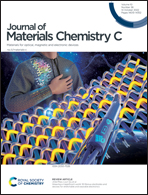Recent progress in InGaN-based photodetectors for visible light communication
Abstract
As an important chip for receiving optical information in a visible light communication system, visible light photodetectors (PDs) modulate the bandwidth and responsivity, which can significantly improve the communication rate and quality of the visible light communication system, and is beneficial to improving the performance indicators of the entire communication system. InGaN, which represents a group-III nitride semiconductor material, has good physical and chemical properties. The preparation of high-bandwidth, high-response InGaN-based visible light PD chips suitable for visible light communication is the mainstream research direction nowadays. This review summarizes the research involving micro-PDs, semi-polar/non-polar InGaN growth, uni-traveling carrier PDs, use of plasmons and green InGaN micro-LED based PDs to reduce the transit time, diffusion time, and RC time of InGaN-based visible light PDs. These studies aimed to improve the quantum efficiency, modulation bandwidth, responsivity wavelength selectivity and high signal-to-noise ratio of the devices, and to improve the communication performance. Furthermore, the perspectives regarding future advances in InGaN-based PDs are also outlined. Therefore, this review is of great significance for further development in visible light PDs.

- This article is part of the themed collection: Journal of Materials Chemistry C Recent Review Articles


 Please wait while we load your content...
Please wait while we load your content...